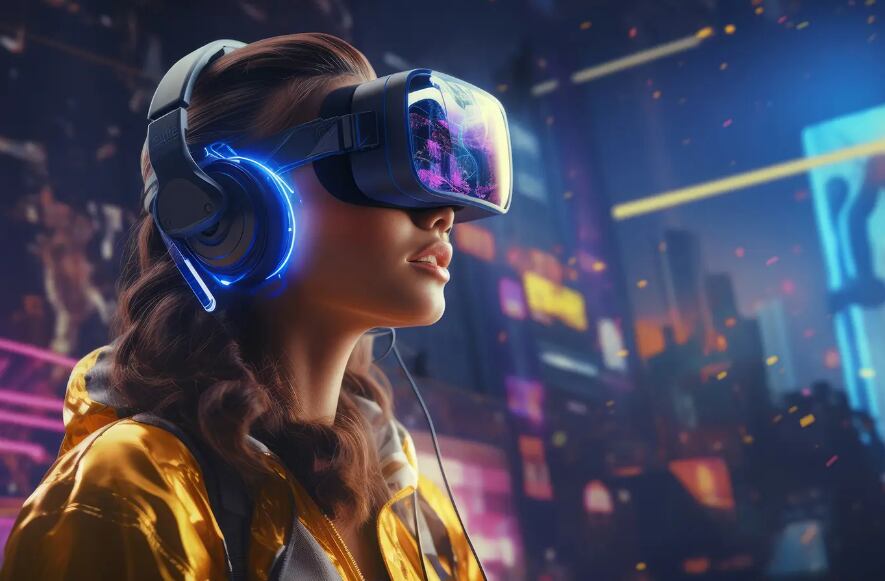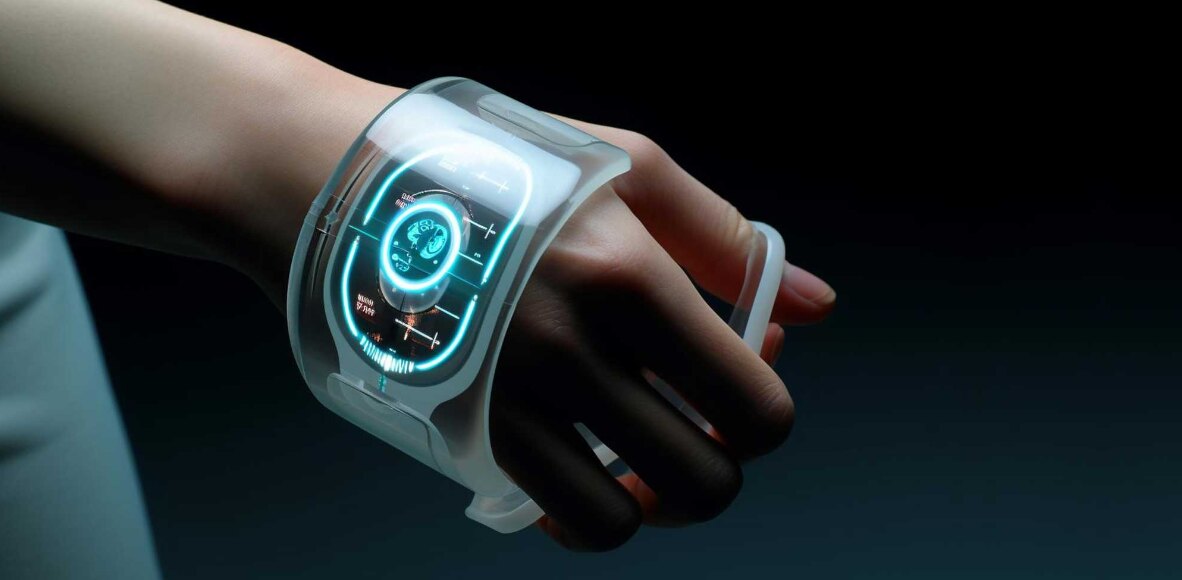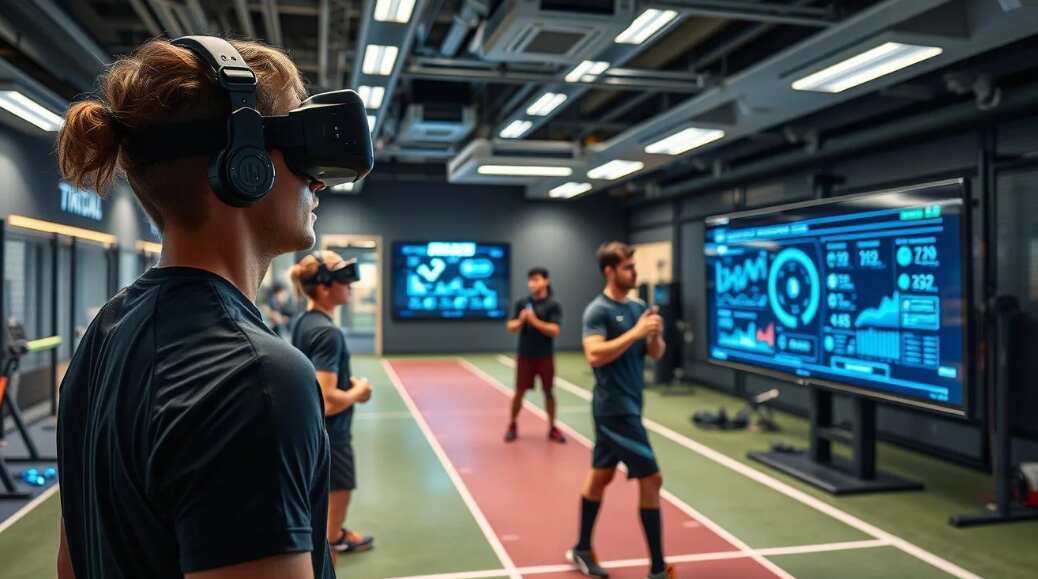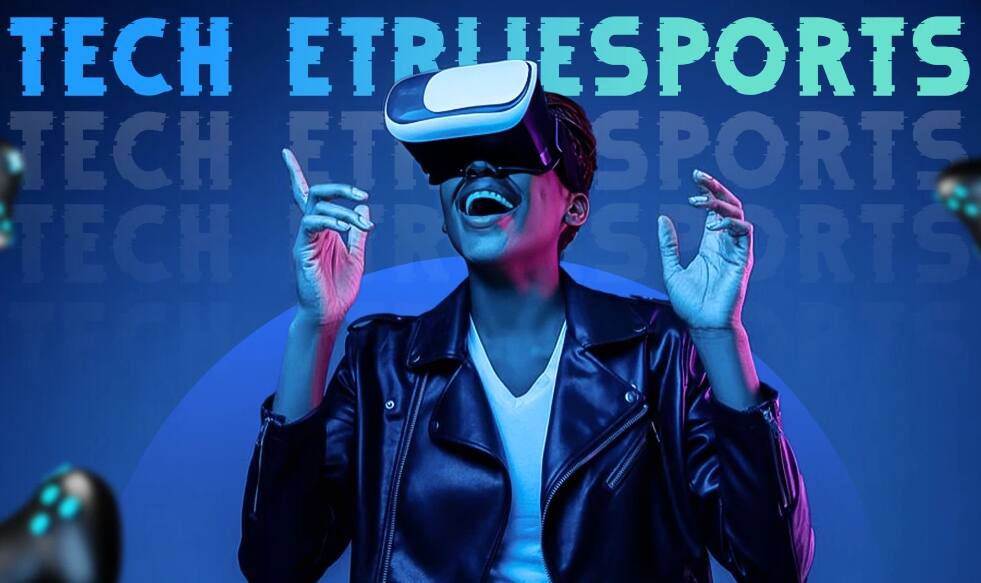With technological advancement, the boundaries of what is considered a sport have been expanding at a very fast rate. Welcome to Tech EtrueSports, where AI, virtual reality, and wearable technologies are fundamentally changing the way sports are played, consumed, and experienced. Be you professional athlete, casual gamer, or avid sports fan, these innovations surely will change the competitive entertainment landscape.
The following article will explain in detail how AI, VR, and wearable devices are setting the future in Tech Etruesports from training and optimization of performance to engaging with fans.
Table of Contents
ToggleTech Etruesports – The Role of AI
Artificial Intelligence in many business sectors has become a game-changer, and sports cannot be an exception. Tech Etruesports uses AI in pushing the boundaries of human performance, providing real-time insights, personalized training, and unique competitive advantages.
AI-Powered Performance Analytics
With real-time data analysis, AI amazes players and coaches with very valued information. Performance analytics have been at the heart of sports training since the beginning, but AI brought new accuracy and depth to these analyses. By processing massive volumes, AI can spot patterns and anomalies in player performance that no human eye is capable of.
AI can track intensive performance profiles based on speed, stamina, reaction time, accuracy, and more. These profiles will help coaches in adjusting training programs, identifying the gray areas for improvement, and developing strategies for each player. This feedback, in real time, permits immediately competitive adjustments to be made in esports environments-a key competitive advantage for the players.
Injury Prevention and Recovery
Another of the major contributions which AI makes to Tech Etruesports is in the areas of injury prevention and recovery. By continuously tracking physiological data in real time, it is able to spot nascent warning signs of fatigue or overuse that may result in an injury. Examples in this regard involve AI measuring muscle strain, heart rate variability, and many other health indicators to alert coaches about their athletes when an imminent injury is likely to happen.
These data-driven proactive steps minimize downtime and accelerate recovery. When the injury does take place, AI can also help in rehabilitation by observing progress and adjusting the recovery programs based on real-time data. The ultimate result is to make sure athletes recover safer and quicker to peak performance.
Impact of AI on Strategic Decision Making
In tech etruesports, strategy is all. The ability to make swift, educated decisions on their behalf during a match may mean the thin line between triumph and loss. AI enhances this decision-making process by making real-time game analysis suggestions based on historical data and predictive analytics.
AI can be used to predict, through patterns, what the opponent’s next move will be and allows the player to foresee and counter such strategies. Teams can simulate various situations, refine their skills through AI-powered simulations, and prepare themselves before meeting their actual opponents.
Play the Worlds Hardest Game Unblocked.

Both VR and AR are changing Tech Etruesports
New realities are emerging from VR and AR, changing how sports are played, viewed, and experienced. Tech etruesports demonstrates how it creates a better immersive environment that benefits all athletes, coaches, and fans alike.
VR in Training and Rehabilitation
Such training, especially in conventional sports, is prohibitively expensive in facilities, equipment, and traveling. VR eliminates these kinds of barriers because it allows athletes to practice in virtual environments that closely simulate conditions found in the real world. That means players can train for specific conditions or opponents without having to leave their homes.
Examples include the fact that a basketball player can practice shooting in various regions: crowd noise, lighting conditions, and even defensive pressure executed through VR. Training like this helps them make better decisions, taking quicker control in times of stress. Similarly, in esports, VR allows one to dive right into the game, developing one’s skills in a controlled environment without the need for a setup of physical peripherals.
VR is also a valuable tool in terms of rehabilitation. Using VR, injured athletes can practice low-impact exercises, minimizing the risk of further injury while keeping them fit. In fact, VR rehabilitation programs allow for specific movements to be simulated, hence allowing athletes to gain strength and mobility even faster.
Increasing Fan Engagement With VR
It is in the experience of a fan that any sport matters, and it’s this aspect where VR will really transform how fans enjoy their favorite teams and players. Imagine watching a football game not from the stands, but from the sidelines or even sitting on the field. Virtual reality technology can put fans right into the action of the game, with a 360-degree view, and it will feel like being part of it.
Moreover, VR improves the social experience of sports fans. Using VR headsets, enthusiasts can enter virtual stadiums where they can share views with other fans, watch live events, play games, and participate in various activities. This kind of interaction develops an attachment among the fans with their favorite teams and thus improves customers’ loyalty and involvement.
Wearable Technology in Tech Etruesports
Wearable technology is way beyond simple fitness trackers. Advanced wearables today can provide a wide array of data about athlete performance, health, and recovery, which are the mainstays of tech etruesports.
Next Gen Wearables for Performance Monitoring
Wearables have now turned into potential tools, monitoring every minute detail of the performance of an athlete. Starting from smartwatches to biometric sensors, smart clothes track heart rates, oxygen levels, activation of peculiar muscles, and lots more from these devices. These devices capture real-time data that AI then analyzes for personalized feedback.
That is, actionable insights that optimize the training of the athletes concerned. In specific terms, wearables will warn athletes when they are overstretching their limits beyond their physiological capacity for appropriate recovery and to avoid further injury. Coaches, too, will make use of such data in fine-tuning adjustments related to the training regimes at pinnacle levels of efficiency.
Health and Wellness Benefits
Beyond performance, wearables also extend into major health and wellness benefits. Wearables, in the case of an athlete, can successfully monitor the amount of sleep, stress, recovery time-all factors that help him maintain a balance in life. Mental health, too, plays an important factor in competitive sports, just like physical health, thus being able to keep the athlete in step with his emotional feelings.
In turn, real-time tracking of such factors puts the athlete in an even better place to make the right decisions regarding their training and recovery to keep them at their best, both mentally and physically.

AI and Wearables: A Perfect Mix for Personalised Training
Wearable devices integrated with AI transform the way in which athletes train. Integrating real-time data gathering with the power of analysis provided through AI, the derivation of highly personalized training plans for athletes adjusts dynamically based on their performance.
AI-Enhanced Wearable Devices
Wearables with integrated AI algorithms can process large volumes of information and report data that, otherwise, would not have been conceivable. For example, a smart jersey with integrated sensors will track the movement of an athlete, their internal biological signals, and even analyze biomechanical performance in real time.
With all this information, AI could establish personalized training programs that would change according to the present state of each athlete. If one shows signs of fatigue, for example, AI can reduce the intensity of the workout to avoid injury. In turn, it can make efforts to increase the difficulty of trainings in case improvement is evidenced by data.
This level of personalisation ensures the athletes are always training at an optimum level, improving performance while at the same time minimizing the risk of injury.
Fan Experience and Engagement Tech Etruesports Technologies
Fan engagement may be seen as the lifeblood of any sport, and Tech Etruesports is leading the way in advancing the way fans enjoy their favorite teams and players.
AI-powered Fan Engagement Platforms
AI is the game-changer in engaging fans with and within sports in increasingly personalized ways of content and experiences. AI-driven platforms make possible updates, highlights, and recommendations pushed onto the fans in a customized manner. A fan that follows certain players may be informed about their favorite player’s recent performances, events in the near future, or his/her personal highlight reels.
Further, with the integration of social media, it enhances fan engagement: the ability to interact with players, share opinions, and discuss them in real time. AI algorithms can analyze fan interactions for personalized content that keeps them hooked in the game.
Blockchain and NFTs For Fan Engagement
Blockchain technology and non-fungible tokens (NFTs) are emerging as new ways to deepen fan interaction. Blockchain enables secure, transparent interactions between fans and their favorite teams. NFTs give fans the opportunity to create, buy, and sell unique digital collectibles. For example, a fan may purchase an NFT related to the most memorable play or moment of a game, thus owning an even deeper connection with the sport.
These will create new opportunities for fan participation since continuous development of these technologies has provided them with unparalleled access and ownership in sport.
Ethical Considerations and Data Privacy in Tech Etruesports
Tech Etruesports will suddenly raise very serious concerns regarding ethics and data privacy. Of all importance, it is that personal data of the athletes needs to be kept safe from collected wearable devices and AI platforms.
Data Privacy in Wearable and AI Technology
A lot of very sensitive information, such as health information and performance metrics, is being collected by wearables and AI platforms. How all this is securely stored and used in an ethical way is paramount. Sports organizations should not create any ambiguity around data ownership, usage, and security in order to gain trust with athletes.
Ethical Impact of AI on Tech Etruesports
With AI rising in tech etruesports, fairness and bias are now key concerns. The treatment will be on an even platform for all athletes if AI algorithms are transparent, nontoxic to bias, and subjective analysis. In addition, AI should support, not supplant, human judgment: coaches and trainers still have an important role in guiding the athletes, and AI serves as a tool to enhance decision-making by them, not eliminate it.

Future of AI, VR and Wearables in Tech Etruesports
The future of tech etruesports is bright, driven by AI, VR, and wearables that push the envelope on what’s possible in sport.
Extended Reality (XR) and Beyond
Next comes Extended Reality, including fully VR, AR, and mixed reality-the next generation in immersive sports experiences. In XR, the athlete and fan will be able to experience real-world situations combined with advanced virtual elements.
Meanwhile, viewers can engage in active viewings, where they can turn on different vantage points and interact with the game as if they were literally a part of it. This combination of technologies will provide opportunities for engagement and learning in sport that have never been seen before.
The Next Generation in Wearables
The more wearable technology is engineered, the more compact, integrated, and powerful devices can get. In the near future, devices of wearables may embed naturally into clothing or directly into sports equipment. These devices can monitor physical performance, cognitive function, and emotional state, as well as deeper physiological processes such as hydration levels and muscle fatigue.
A level of insight that in tech etruesports is going to revolutionize the game-so to speak-allowing almost instantaneous adjustments in training, recovery, and even strategy to take place. Besides, wearable devices will also keep becoming smaller, less invasive, and more efficient with better battery life and wireless data transfer.
FAQ’s About Tech Etruesports
How is tech etruesports different from traditional sports?
Tech Etruesports are a hybrid space between physical sports and esports, augmented by advanced technologies including AI, VR, and wearables. If traditional sports focus all attention on physical performance, tech etruesports integrate data analytics, simulation, virtual experiences to enhance player performance, fan engagement, thereby creating many types of sporting experience beyond the mere bodily prowess of the players.
What are the advantages of AI for sports besides tracking performance?
Besides performance tracking, AI also provides better fan engagement through personalized experiences and content. It can automate game summaries, predict game outcomes based on data analyses, and even manage ticketing and customer services for sporting events. AI also plays a key role in sports betting, where it offers real-time odds and predictions based on ongoing sporting events and historical data.
In what way does wearable technology enhance the mental aspect of sports training?
Wearable technology isn’t all about physical metrics; there are also mental aspects of an athlete’s health that it is affecting positively. Wearable devices with biometric sensors are capable of monitoring the levels of stress, sleep, and heart rate variability related to mental health. Wearable devices provide insights into an athlete’s state of mind, and thus, coaches may make necessary adjustments in training routines to achieve optimum mental and emotional balance, reduce burnout, and improve performance.
Is it possible to use virtual reality for training in any team-based sport?
Yes, it surely can be imparted quite effectively in teams or squad sports training. The actual team-based exercises could be simulated using VR since a number of players would be training together in some virtual environment. Teams can have formation practices, tactical rehearsals, and coordination drills without actually needing to be in close physical proximity. This will prove quite useful for global teams or esports squads whose members cannot train together due to distances between them.
What limits AI and wearable technology in sports?
But again, AI and wearables do come with a number of limitations. AI is based on data, which can sometimes lead to biased or incomplete analyses-especially if the pool of data is not representative nor diverse enough from all players. On the other hand, wearable technology may result in inaccuracies in data collection if sensors are not calibrated correctly or corrupted due to environmental factors such as extreme weather conditions. Furthermore, a line of concern over the use of collected data, in regard to privacy and ethics, is also portrayed.
How will blockchain technology affect tech etruesports?
This blockchain technology may be very much different from what is currently running in tech etruesports and will bring more transparency, security in the use of athlete data, transactions, and fan engagement. Just an example enabling more secure ticket sales, fraud deterrents, and even a way for athletes and teams to tokenize their performances or merchandise with NFTs, or non-fungible tokens. This will open more revenue streams for them and more trusted interactions between fans and players or teams.
Can wearables combined with artificial intelligence predict athlete injuries?
Yes, wearables combined with AI are a powerful combination for injury prediction. Wearables collect physiological data in real time, while AI analyzes that data for patterns showing fatigue, overtraining, or muscle strain. By processing this information so quickly, AI is able to present possible risks to athletes and coaches so that adjustments in training loads or rest can be made before an injury happens.
How is VR changing the way fans experience sporting events?
Changing the fan experience, VR provides completely immersive, interactive views of live sporting events. Wearing a VR headset, the fan can virtually “be a part of” the game from their couch and view 360-degree action from the sidelines, the locker rooms, or even a player’s point of view. Immersion brings fans closer to the action by drawing one into an arena in live event ways in which traditional broadcasts simply cannot.
What are the security concerns regarding AI and wearable technology in sports?
Data privacy is one of the most important issues. Sensitive health and performance data collected from a wearable device requires proper storage in terms of security and any unauthorized access. In AI systems used for processing these types of data, privacy regulations have to be followed with care in order to avoid misuse or data breach. There are a few areas of concern with regard to ethics in AI decision-making, which includes things like team selection where biased algorithms might affect unduly biased choices amongst the athletes.
What is the future of AI, VR, and wearables in enjoying Tech Etruesports from a fan experience perspective?
In the future, thanks to AI, VR, and wearable technology, the fan experiences are going to be super personalized, immersive, and interactive. AI alone will create content that ranges from personalized match highlights to interactive social experiences. Virtual reality will bring the fan closer to the action, living games virtually or seeing them from angles they never have seen. Wearables can provide health data during interactive workouts inspired by favorite players or teams, further bridging them coming closer to athletes than has ever been possible.
Conclusion
The uprising of AI, VR, and wearables is tuning tech etruesports into a futuristic playground where availing cutting-edge innovation for athletes and fans is concerned. From performance insight with AI-driven data analysis to injury prevention, immersive VR experiences, and next-gen wearables, the possibilities are endlessly Gorsuch. These changes are bound not only to influence the way sports are viewed and consumed but also to reshape the future of athleticism, competition, and entertainment.
As technology reaches that age, so does the world of tech etruesports, in which some great opportunities will be opened to players, fans, and the overall industry. Welcome to the future of sports- powered by AI, VR, and wearables-already here yet only just getting underway.
For more information on gaming topics visit Tech Duration.





